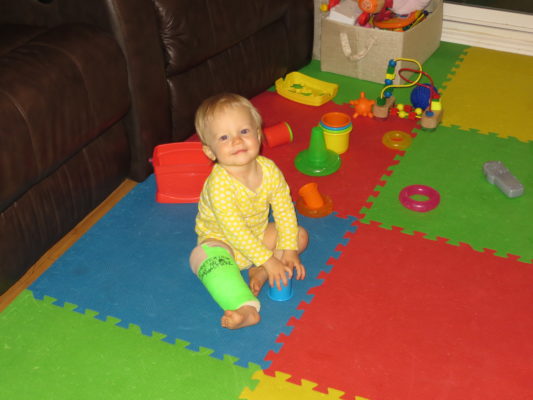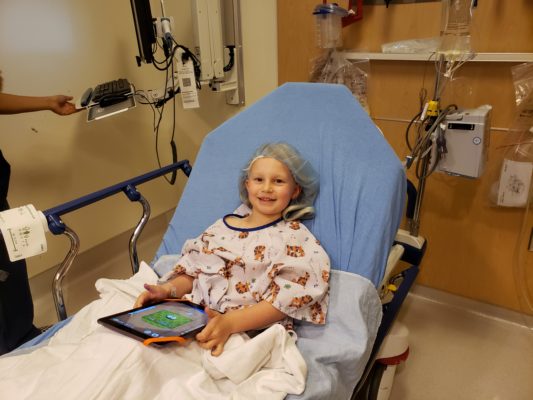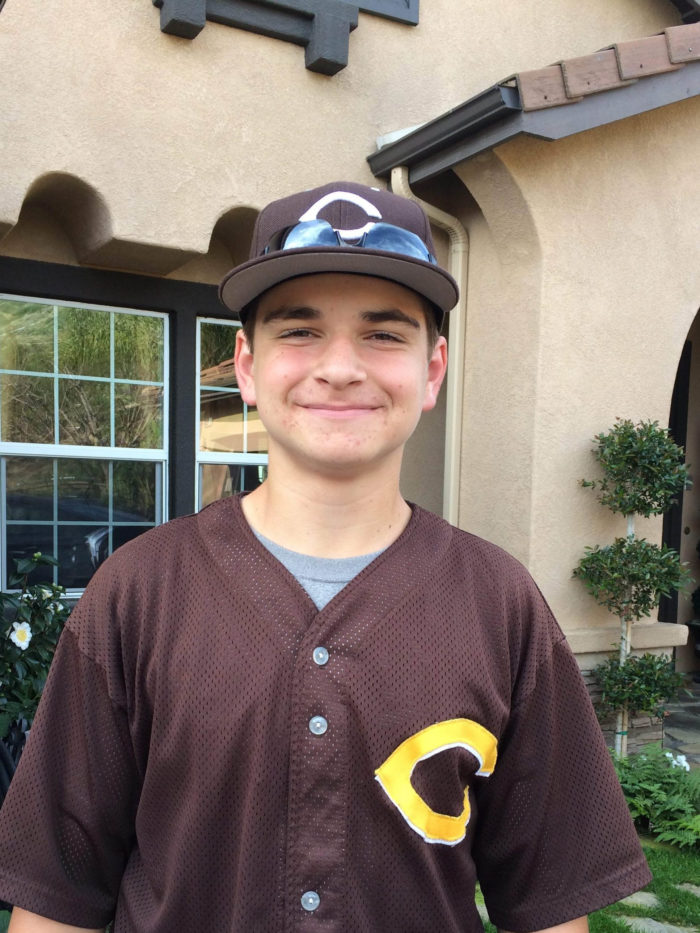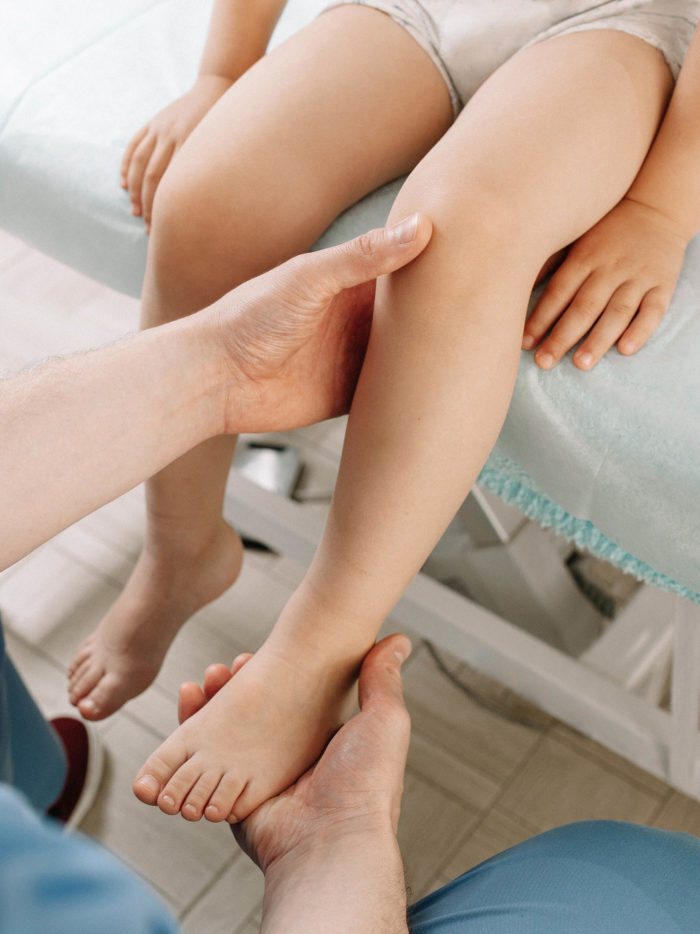The first 11 months of Mackenzie’s life were like most other children. But as she was on the cusp of learning to walk, her parents Danielle and Victor noticed that she used her baby walker with a bit of a limp.
They took her to urgent care, where a doctor ordered X-rays and noticed she was favoring her left leg. He suspected a toddler fracture—a hairline crack in the shin bone, about which not a lot can be done, and common among wobbly toddlers—and sent them home.
Journey towards a surprise diagnosis
Wanting more peace of mind, Danielle and Victor followed up with Mac’s pediatrician who referred them to an orthopedist, a doctor who specializes in bones, joints and nerves. That specialist was able to rule out the toddler fracture, but suspected Mac’s issue may be joint-related, and referred her to a pediatric rheumatologist, a doctor who specializes in the swelling and pain in muscles and joints.
“As a parent, you are your child’s advocate,” says Danielle. “Even with the right team and resources, there is still effort on the parent’s part.”
By that time, Mac had lost range of motion and could no longer straighten her leg.
“It’s terrifying when your kid has a health issue, especially when they are too young to tell you what hurts, or what’s wrong,” Danielle says.
Thankfully, the pediatric rheumatologist they met with at CHOC was able to provide a definitive diagnosis, and quickly. After blood work and a physical examination, Mac was diagnosed with an oligoarticular juvenile idiopathic arthritis (JIA). This is the most common form of juvenile arthritis, and usually affects toddlers’ knees. JIA is an inflammatory condition that develops when the immune system’s normal regulations don’t work perfectly, and inflammation occurs in the tissues surrounding joints. This results in swelling, stiffness, pain and limited movement.
“When we got to CHOC, we were so worried, but the doctor pointed us in the right direction and alleviated our fears,” Danielle recalls.
Although arthritis affects nearly 300,000 kids and teens in the U.S., it’s commonly thought of as an ailment that only affects grown-ups.
“At first, I didn’t tell anyone that Mac had arthritis. It wasn’t something that I put out there. It wasn’t that I was embarrassed, but I was scared and didn’t love talking about it,” Danielle recalls. “But then I had an epiphany—I wasn’t going to help her or anyone else by not talking about it. I needed to raise awareness that it affects infants and kids, too.”
Mac, 14 months old at that point, underwent a corticosteroid injection. These injections are an effective treatment for oligoarticular arthritis, and work by decreasing inflammation in the joint into which it is injected. Because she was so young—and fidgety like most kids her age— she was sedated for the injection. She also underwent serial casting, a process where clinicians straighten the knee while a child’s cast is drying. The temporary cast is removed after a few days and then a new cast is applied with the knee a bit straighter each time.

“Mac has been brave since day one,” Danielle says. “The machine used to cut off her casts was loud, but my kid is afraid of nothing.”
These injections are kept to a minimum to reduce problems that can come with prolonged steroid use, like joint damage.
Juvenile arthritis treatment and remission
JIA often goes into remission, which can last for months, years or even a person’s lifetime. Mac’s JIA went into remission for two years before her parents noticed that she was having trouble walking.
Her original rheumatologist had relocated out of state, so her care was transferred to pediatric rheumatologist Dr. Andrew Shulman.
“We fell in love with Dr. Shulman the first time we met him,” Danielle says. “He calmed our fears. He made us believe we could get through this. He explained things in a way we could understand. I don’t think we could be in better hands.”
Mac and Dr. Shulman hit it off right away. In part, because she loved his signature bow-ties so much.
Three-year-old Mac underwent another steroid injection after her flare-up at age 3. Since her muscles were weak, she also underwent physical therapy to gain back strength. This triggered another two years of remission.
A few months before her sixth birthday, Mac started complaining of pain in her right ankle. Previously, her arthritis had only affected her right knee. This flare-up required two corticosteroid injections in her knee and ankle, which so far have re-induced remission.
“The easier thing about having a 6-year-old with arthritis than a 1-year-old with arthritis is that she is so much more articulate at this age,” Danielle says. “I can ask if she hurts because she fell on the playground at school, and she can help me rule that out as a potential source of pain. Now that she’s older, it’s easier to identify pain as an arthritis flare-up rather than something else.”
When she experiences a rare arthritis flare-up, her first line of defense involves naproxen, an over-the-counter anti-inflammatory drug. If more consistent flare-ups become a reality, or if additional joints start suffering, Mac may need more regular medication, in the form of Humira, a bi-weekly at-home injection that protects against over-active inflammation pathways in the immune system.
“Anytime we have a flare-up or questions, Dr. Shulman is always available to us,” Danielle says. “Having a child in pain is terrifying to a parent, and to have your doctor call you back the same day is nice.”
It’s hard to predict if arthritis in children will go away on its own or become a lifelong ailment.

“We may have had her last flare-up and she might be fine for the rest of her life. Or, her future could be systemic medication and joint replacements; I have no idea,” Danielle says. “Raising awareness and funds for research and a cure, that’s what makes me feel better about it.”
Mac’s family and friends are now active with the local chapter of the Arthritis Foundation.
Day-to-day life for a child with JIA
Mac’s day-to-day life is much the same as any other six-year-old. She loves swimming lessons, play dates, gymnastics and ballet. She’s also fluent in Mandarin, loves science and math, and is taking Spanish lessons at summer camp.
Her love for staying active is key to her overall health; muscle strength and endurance can help reduce joint pain and fatigue.
“We don’t want Mac to grow up with the stigma that there is something wrong with her,” Danielle says. “We tell her that she can do anything she sets her mind to.”
Maintenance
Mac sees Dr. Shulman every three months for a check-up. She occasionally wakes up feeling stiff, but a special heating pad to warm up her joints helps.
Since children with JIA can experience uveitis, a form of eye inflammation, Mac has regular check-ups with a pediatric ophthalmologist for monitoring.
Even with doctor’s appointments and occasional flare-ups, six-year-old Mac has no fear of doctors or hospitals.

“The people and environment at CHOC are so inviting. The colors, the calming effects, the videos and books and toys in the waiting rooms—everything makes it easier on the kids, and the parents, too,” Danielle says. “Everyone from the people in Dr. Shulman’s office to the team who draws blood, is amazing. They give Mac toys to distract her from the poke, and that raises her comfort level.”
Mac’s family, based in Orange County, feels lucky to have their care team so close to home.
“Some people have to drive long distances to see a qualified rheumatologist, and we are lucky to have our team so close to home,” Danielle says.





